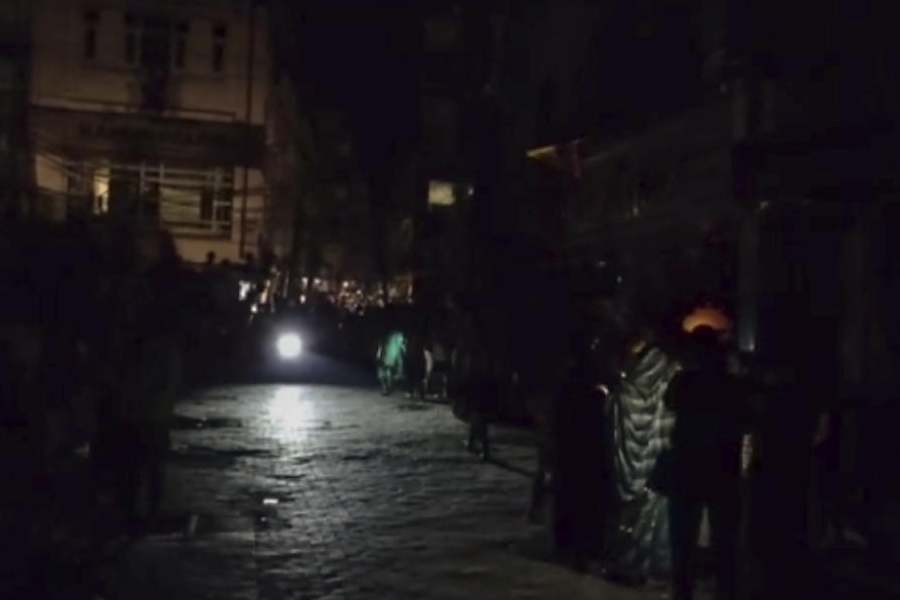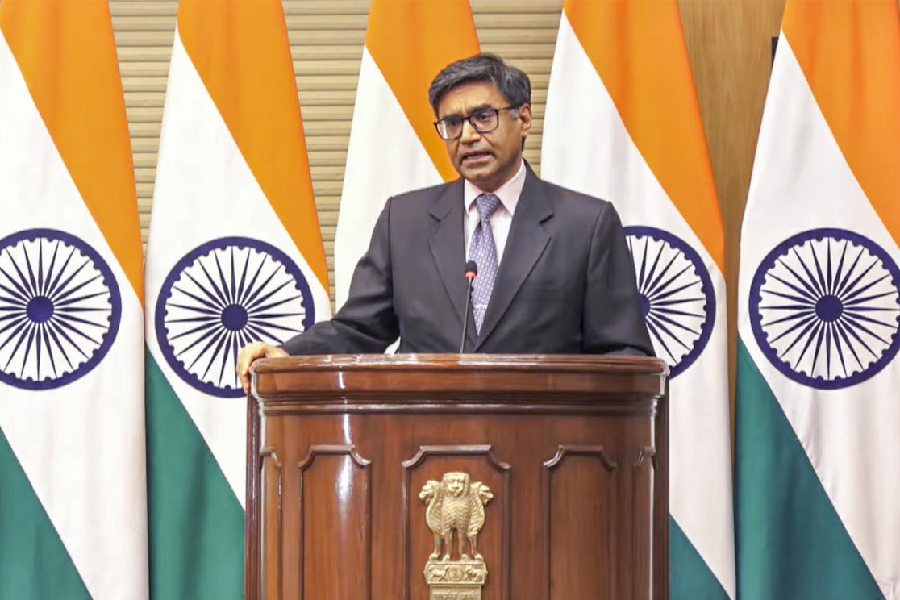|
|
Since March 11, Japan has been reeling from a 9-point earthquake and the resulting 25-foot tsunami that struck 250 kilometres northeast of Tokyo, leaving 11,000 dead, 17,000 missing, and 250,000 evacuated from a 25-km radius because of a possible catastrophic meltdown of over-heated fuel rods at the Fukushima Daiichi nuclear power plant, from which radiation leaks have been detected up to 19,000 times higher than normal. The two banks of nuclear reactors at Tokyo Electric Power Company’s plant add up to some 6 per cent of Japan's electricity generation capacity and their shutdown affects the greater Tokyo region that houses 35 million people. Because of different electrical current frequencies in regional grids, Tokyo can only draw limited power from other parts of Japan through available transformers. Twenty thousand acres of agricultural land have been inundated by saline sea water, 30 per cent of Japan’s fisheries were located in the region, some industrial units including hi-tech companies have been destroyed, five million households were without electricity and two million without water. A quarter of a million people are in shelters. The Japanese government estimates the cost of the disaster at $300 billion.
The whole world has looked on with horror and sympathy, but also with great wonder at the stoicism, self-sacrifice, discipline and civic consciousness of Japanese society. There has been no panic, no breakdown of public manners, no riots or disturbances despite unimaginable privation. Notwithstanding one false alarm originating from Tepco, official statements and warnings are taken at face value and willingly acted upon. All evidence points to the opinion that Japan will recover its equilibrium faster than any other country could in similar circumstances.
But this tragedy has struck the country at the worst of times. Japan rose after World War II, under a democratic constitution and without regular armed forces, to become the second biggest economic power after the United States of America, with its security assured by a nuclear umbrella and an alliance with the US. It increased its real gross domestic product by eight times between 1955 and 1985, had 15 per cent of the world product, became the largest provider of credit and aid, and the yen appreciated by 300 per cent against the US dollar. Japan had effectively achieved the ‘Greater East Asia Co-prosperity Sphere’ that it had identified as an objective, but had not been able to organize in World War II. It aspires, like India, to being a permanent member of the United Nations security council, and shares with India the implacable opposition of China.
When Japan should have been enjoying the fruits of the post-Cold War period, it fell into economic stagnation. With a population of 128 million and a GDP of $4.3 trillion, now the third after the US and China, it is trying to adjust its systems of government guidance, regulation, education, management and social stability to the urgent demands of globalization and the ‘new economy’. Japan’s readjustment to the globalized epoch has been difficult because it has the vulnerability of a trading nation that is resource-poor, and its ethnocentric culture militates against the generation of soft power. The Japanese sense of national identity is based, with good reason, on the conviction of its country’s uniqueness. The reluctance to use the Roman alphabet, for example, is resolute, although objective experts agree that it would suit the language well. While the rhetoric of East Asian fraternity and cooperation is often expressed, Japanese uniqueness is still regarded as precious and exemplary, and the absorption of Western technology has left traditional Japanese values comparatively uncompromised.
A conservative élite is the source of Japan’s distinctive style and strategy in dealing with the rest of the world. This élite was pragmatic and opportunistic, and ensured that the nation would organize itself internally to succeed externally. Each major change in strategy has been in response to a new configuration of world power. The rise of China, threats from North Korea, terrorism and piracy in sea-lanes are now inspiring another reassessment of strategies, and have already led to a tighter alliance with the US. Japan has responded by taking a more active stance in East Asia and expanding its naval forces. It wants eventually to amend Article 9 of its constitution to enhance the quality and reach of its armed forces. Chinese incursions into Japanese waters are the latest threat, especially to the Senkaku (Diaoyutai to the Chinese) islands. In addition, Russia and Japan have a dispute over four islands, the Northern Territories (Japan)/ Kuriles (Russia), and Takeshima/ Tokudo is also disputed between Japan and South Korea.
Nearly 20 per cent of Japan’s exports go to China while China is the biggest exporter to Japan. Japan employs nine million Chinese in various enterprises in China. But the relationship between the two countries is always fraught and volatile. China continues to see Japan through the optic of Japan’s violent past, while Japan perceives China in the context of its own constitutional pacifism, and worries deeply about what kind of neighbour the rising China will turn out to be. The result is an uneasy balancing act, with Japan courting better relations with Beijing, but seeking security assurances from Washington as well. With the end of the Cold War, many of the self-binding restrictions adopted by Tokyo to preclude entanglements in foreign commitments have been unravelling. The famous eight ‘Nos’ — no dispatch of the Japanese self-defence forces abroad; no collective defence agreements; no power projection; no more than 1 per cent of the GDP for the defence budget; no nuclear arms; no sharing of military technology; no arms exports; no military use of space — may all have to be revisited, and only the ban on nuclear weapons will remain sacrosanct. Because these restrictions are self-imposed, Japan can change them at its own speed and volition.
Japan has revived its ministry of defence after 60 years. No US strategy in the Pacific rim will be possible without Japan’s cooperation, and the Japan-US agreement of 2005 for mutual cooperation and security seemed to anticipate a revision of Japan’s constitution. On the Taiwan issue, Japan is faithful to the American position and whether the ambiguous “surrounding areas” in the US-Japan security treaty of 1997 includes Taiwan or not, Japan and the US share acute anxieties about China and North Korea’s missile capabilities. In a theatre missile defence arrangement, Japan plays host to a US radar system to intercept missiles and the US will deploy Patriot and Standard missiles. With 119 warships, Japan is a formidable asset to the US at sea. In the defence budget, Japan sets aside a sum of about $50 billion for an active force strength of 250,000 and a reserve of 50,000. Nevertheless, its military and security arrangements with the US prevent it from exercising wholly independent strategic choices abroad.
Japan is a world leader in many fields — science and technology, robotics, digital electronics, alternative energy, computer games, and nanoscience. But there is a widespread dissatisfaction with old-style politics, its average life span is 82, the yen is weak, and energy prices are high. Its service sector has lagged, and it suffers from a lack of domestic competition. It is inefficient in many domestic sectors, and its professional services are considered backward by pace-setting standards. It has been highly efficient at exports, running an approximately $90 billion surplus in trade account each year with the US, but now there are many more competitors in the export trade. The compelling need for energy security has lately obliged Japan, like China, to enlarge its scope of economic interest to Central Asia. Japan has to rebuild its domestic economy to eliminate a culture of rules and rigid ideas, women who do not work, resistance to change, opposition to immigration, non-acceptance of outsiders, preference for large organizations, and collective decision-making that is slow. Japan is fortunate in that it has no large peasant class and no smokestack sector side by side with knowledge-based industry, but in the first decade of this century, manufacturing output was less than it was in the previous decade, and its share in both world output and exports was shrinking.
An aversion to generation of power through nuclear energy has now manifested itself globally, with immediate political outcomes like the Green Party causing an electoral upset in Germany. Whatever governments and societies decide on the future of nuclear energy after prioritizing questions of energy security and climate change, it can only be on the basis of relative risks, because nothing in this field comes with certainties. Back in Japan, the radioactive contamination from Fukushima will take months to be controlled. The Japanese public has voluntarily embraced an austere lifestyle thanks to admirable self-restraint and community spirit, and the previously weak government of the prime minister, Naoto Kan, has been strengthened because people feel he has performed creditably and transparently in adversity. When the Japanese have overcome the setback of a cruel act of nature, they will revert to the even greater challenge of reasserting their nation on the world stage.











